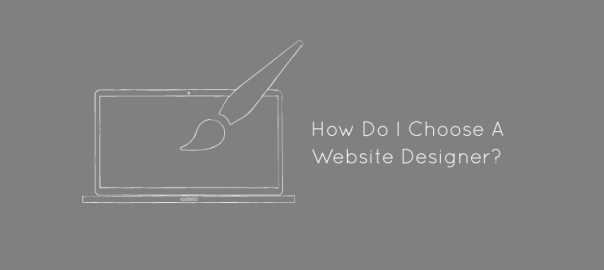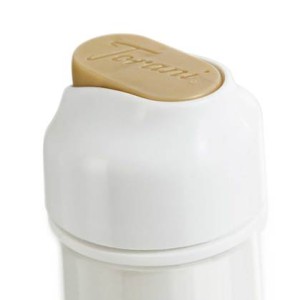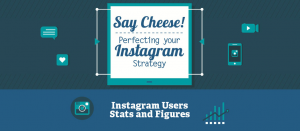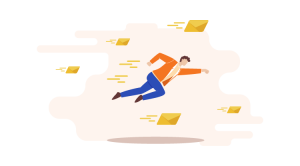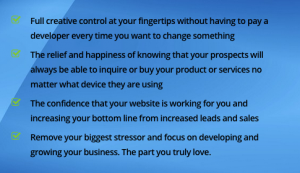The pain of figuring out how to choose a website designer is something near and dear to my heart.

I know it well — and I know what you’re going through. Figuring out how to choose a website designer can be frustrating (especially when you’re not sure where to start).
From the moment you consider starting a business, you should be thinking about a website—it’s one of the most important tools for business growth and development that you can take advantage of.
Some people will tell you to design your own website on a free website builder (don’t listen to those people, they probably have a crappy website).
Other people will tell you to not even bother designing a website because it’s going to cost you tens of thousands of dollars, but this is usually only the case for businesses with complex needs—a simple marketing website with few complex functions isn’t going to break the bank.
When I designed my personal site, I wasn’t worrying too much about how to choose a website designer—I thought I’d just come up with my own design. After all, I’ve got some background in web design, though professionals handle the web design around here (as the writer, I design nothing around here but paragraphs—Cassie designs them.)
While I did get it working eventually, I spent a great deal of time bogged down in details, like colors and fonts, and little time thinking about the purpose of my website, the goals that I had.
That cost me nothing but my own free time—but you’re a business owner, and your time is money.
You can’t afford to make a mistake on this one—and you can’t afford to spend countless hours learning (or relearning) the information necessary to DIY the thing.
You also don’t want to go with a website builder for a variety of reasons—one of the main problems with a builder is the templates aren’t chosen to fit your content, but more about that later.
You need to make absolutely sure the website is set up to contain the content (rather than the reverse, choosing content to fit an arbitrary design).
You probably need a professional. But choosing a professional can be scary (what if you pick the wrong one?)
Never fear! I’ve come up with some proven tips to make sure you pick the right company for your needs (and avoid a nightmare in the future).
How to Choose a Website Designer—First, Determine the Goals of Your Website and What Success Looks like for Your Company
Some of the biggest flubs I’ve seen when it comes to buying or designing a website flows directly out of this—someone hasn’t considered the goals of their website or what a successful project looks like to them.
The designer suffers because they’re not sure what the client wants, and you suffer because you feel like you’re not getting what your customers need.
Now, a seasoned and trusted designer help you figure these things out and steer you away from fancy ideas that are just going to drain your budget without achieving your goals—they’ll let you know that your crazy dream of a website filled with autoplay videos and giant, explosive graphics isn’t going to work for the actual people who visit your site.
I urge you to listen to them.
The alternative is that you fish around until you find someone who will say yes to whatever you ask and then design you a piece of junk and disappear.
When you’re trying to figure out how to choose a website designer, one of the biggest mistakes you can make is to go in unprepared. A little work on the frontend will save you tons of time in the long run.
Think about Your Content Before You Worry About Design
Your content matters most—I know, I know, content is boring, the writing part isn’t the fun part, but this is the only thing that matters to your audience.
They’re not coming to your website to admire the design—they’re coming to your website looking for information. That’s why the content must come first.
The content can then drive design decisions.
For example, you may find that, based on your content, you’re going to need a much different home page than you initially imagined—maybe you need many different sections to contain various snippets of content (instead of the 3 columns you imagined).
So look at your content first, and spend some time thinking about your brand, your audience, and what the needs of both are for the content you’ve created (or intend to create).
You may even need to get a professional writer to create the content you have in mind (hey, we’ve got one of those!)
Pick A Realistic Budget — And Understand the Difference Between a Website Designer and A Website Developer
Remember, at this point, you’re only picking someone to design your website—not develop it.
Those are two very different things.
A designer comes up with the look and feel of your website, but they generally don’t physically create the website—that’s the job of a developer.
This is where the budget comes in—I hate to be the bearer of bad news, but getting a quality website isn’t going to be cheap.
And it gets worse if you have your heart set on a customized design.
If you’re not sure what your budget should be (hint: $ 500 is way too low) then read our blog post on the subject here.
Research Designers—And Look at Websites They’ve Designed
Here’s the trouble with figuring out how to choose a website designer—websites evolve over time. And something that a designer created 2 years ago may have been changed drastically from the original idea.
Also, just because something looks beautiful doesn’t mean it’s doing its job—remember, you want to create a website based on your goals for your business.
Your website needs to be doing a job, like bringing in leads or selling products.
Websites can easily sit around and look beautiful without completing their job (like an actor who refuses to get in front of the camera).
You can start by looking at your prospective designer’s—if their website looks good, that’s encouraging, but again, it doesn’t mean a whole lot.
Then, check out their portfolio of work. If they don’t have a portfolio of work, run far, far away!
Finally, check out the actual websites they’ve designed—are they effective? Are they doing the jobs they need to do?
You might have to read reviews or talk to their former clients to find out if the websites are actually effective.
This right here is the most important thing you can do—it’s probably the best tip I have on how to choose a website designer.
Talk to Their Former Clients and Read Their Reviews
Find out how other people fared when they worked with this designer.
Contact them if you can and ask a few quick questions—did the website turn out alright? Does your website complete the tasks you need it to complete? Are you satisfied with the experience? Would you hire them again?
If you can’t find very many people to talk about their experience, that’s a problem.
If they don’t have many reviews, that’s a problem.
If you’re getting a lot of mixed opinions, that’s a problem.
However, if people have good things to say (and there will always be a handful who don’t), then you might have a winner on your hands.
Want to Know How to Choose a Website Designer? Meet with Them!
This is my final piece of advice. Once you’ve spent time learning all you can about them, set up a meeting.
Give them the information you’ve gathered, tell them who you are, what you do, and what you need, what your goals are, and then see if the fit is right.
Trust your gut, listen to your intuition, and, if it makes sense and seems right, go for it!
Or, you know, you could just stop worrying about how to choose a website designer pick us instead
Digital & Social Articles on Business 2 Community(50)
